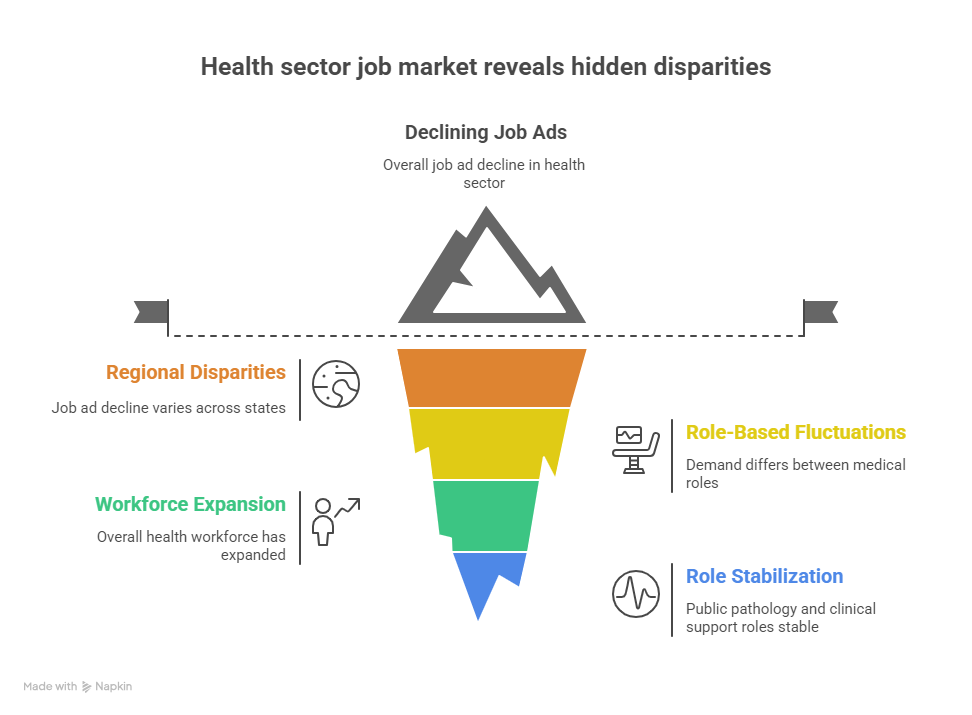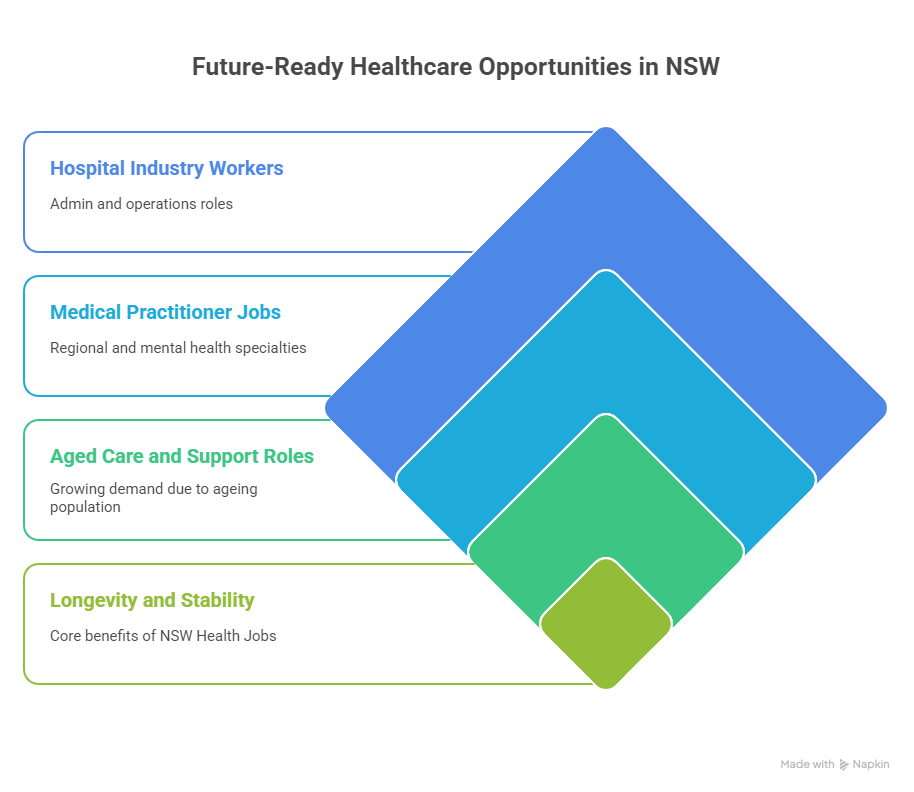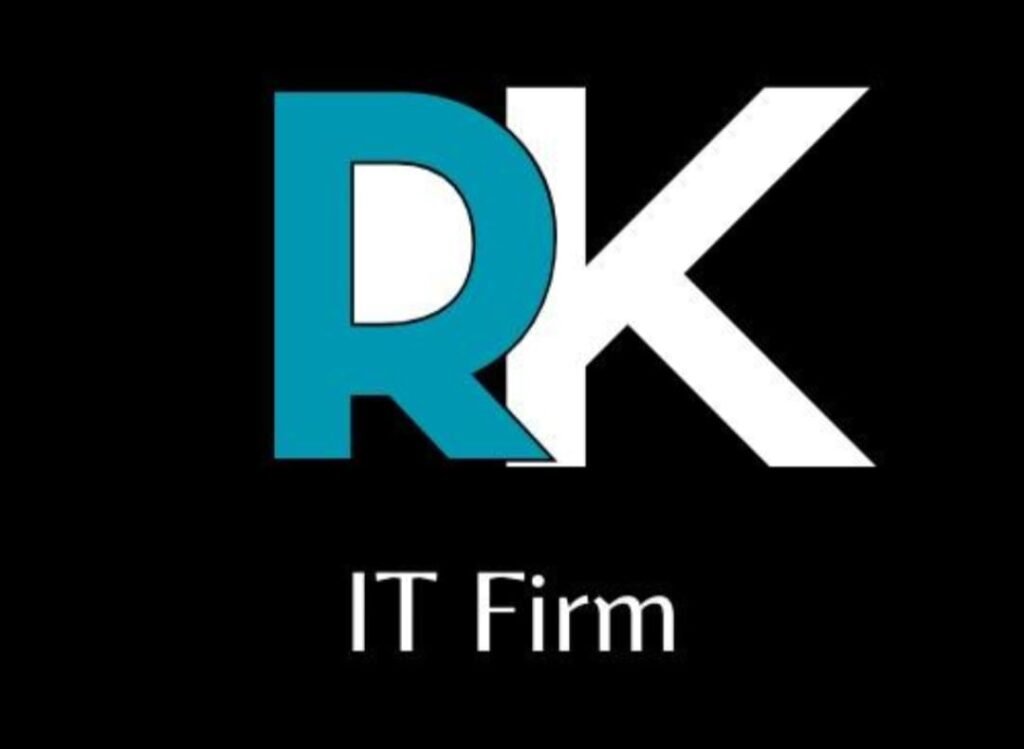Introduction to NSW Health Careers and Workforce Shifts
The NSW Health Jobs landscape is a critical pillar of Australia’s healthcare system, supporting thousands of professionals across hospitals, pathology, aged care, and public health services. With ongoing policy reforms, regional labour demand, and a national push for inclusive hiring, the sector continues to offer meaningful roles for Australians entering or transitioning within healthcare.
Below is a summary table of key data points shaping the NSW Health Jobs outlook in 2025:
| Category | Key Insights |
| Job Ads Volume | 28,160 ads in Feb 2025 (↓18.7% QoQ, ↓22.33% YoY) |
| Health Sector Employment | ↑4% year-on-year growth nationally |
| Most Affected Roles | Nursing & Midwifery (-32.8% ads YoY), Medical Practitioners (-30.9% QoQ) |
| Regional Hiring | Stable or rising demand in NT, slight uptick in Allied Health |
| In-Demand Roles | GPs, Anaesthetists, Speech Pathologists, Dental Assistants |
NSW Health Jobs Offer More Than Employment – They Offer Impact
Behind every job ad and vacancy statistic is a story –a person whose career is reshaped by their entry into the NSW Health Jobs system. At a Sydney-wide taskforce meeting in late 2024, NSW Health Pathology shared real examples of success that prove the life-changing potential of public health careers.
One such story is that of Asraa Al Saadi, whose journey from a job seeker to securing a position at NSW Health Pathology reflects the strength of the local jobs program in helping people from diverse backgrounds access stable and respected roles in healthcare. Her case was highlighted by People & Culture Acting Director Jessica Lee to demonstrate how effective recruitment support can bridge employment gaps for Australians.
These accounts are not rare. Across health sector jobs, workers are finding career direction, financial security, and a deeper connection to community service – whether in metropolitan hospitals or remote allied health posts.
Health Sector Jobs Show Regional Disparities and Role-Based Fluctuations
Despite a national rise in health sector employment, the 2025 vacancy data tells a complex story. While job ads declined overall across the health and medical labour market, including medical jobs Australia-wide, the depth of this drop varies.
For example:
- TAS experienced the steepest year-on-year decline in job ads at -35.5%.
- NSW reported a 38.8% drop in job ads specifically for nursing and midwifery jobs.
- Conversely, the Northern Territory recorded higher-than-average demand for medical practitioner jobs, suggesting workforce shortages persist in remote areas.
Such data reflects a shift in job ad volume rather than total employment. The australian health workforce has expanded in the past year, even if hiring momentum has cooled post-pandemic. In other words, there are more people employed, but fewer new ads as roles stabilize.
This is especially true in public pathology jobs and clinical support roles, which showed relative steadiness compared to frontline practitioner positions.

Inclusive Hiring and Diversity in NSW Health Pathology Careers
The NSW Health system has made notable progress in promoting equity and diversity in recruitment. At the Joint Sydney Wide Taskforce, stories emerged of individuals overcoming career obstacles – such as gaps in education or refugee status – and successfully entering NSW Health Jobs with the help of employment in allied health programs.
The government’s extension of the Local Jobs Program for an additional two years reflects its commitment to workforce participation across cultural and socio-economic backgrounds. Many speakers at the Taskforce, including Acting Chief Executive Dr. Deanna Paulin, emphasized how these initiatives help align the health system workforce with the communities it serves.
In an industry where patient outcomes are shaped by cultural sensitivity and communication, workforce diversity is not a buzzword –it’s essential. NSW’s healthcare institutions are becoming more reflective of the state’s population, and the benefits are evident in patient care, team dynamics, and community trust.
NSW Health Jobs Amid National Workforce Pressures
Australia’s wider healthcare workforce is currently experiencing noticeable shifts and restructuring. The aftermath of pandemic hiring surges has led to reduced job ads across multiple states and occupations.
However, the health sector employment rate has stayed robust, particularly for those in regional medical jobs and clinical job vacancies such as Dental Assistants, Optometrists, and Technicians. These roles saw quarter-on-quarter increases – a sign of recovery and realignment rather than decline.
This contrast between vacancy volume and actual employment signals the ongoing evolution of healthcare careers Australia. It reflects sector maturation post-pandemic and renewed focus on strategic hiring rather than bulk recruitment.
Some of the occupations still showing strong demand in 2025 include:
- Audiologists and Speech Pathologists
- General Practitioners
- Psychologists and Social Workers
- Medical Imaging Professionals
- Nursing Support Workers
- Occupational Health Professionals
These are not just technical roles – they represent the growing need for holistic, community-facing care, especially in rural and outer metro regions.
Real People, Real Careers: Stories from the NSW Public Health System
What makes NSW Health Jobs distinct is their connection to purpose. Numerous employees view their work as more than just a job – it feels like a true calling.. These roles offer more than a paycheck – they bring identity, meaning, and the chance to support communities in direct, measurable ways.
Taskforce sessions revealed career transitions that were once unimaginable — refugees becoming technicians, single parents reentering the workforce through lab assistant roles, and former retail workers retrained as allied health professionals.
Each success story adds to the momentum of inclusive hiring in public health sector, where lived experience is valued alongside formal qualifications. The sector is becoming more accessible, especially with ongoing training and workforce programs funded at both federal and state levels.
Salary Trends Across NSW Health Jobs Reflect Workforce Priorities
NSW Health Jobs continue to provide stable and competitive salaries across a wide range of health and medical occupations. The average annual pay in roles such as nursing, medical imaging, allied health, and public pathology reflects market conditions and evolving labour demands. For example:
- Nursing and midwifery jobs in metropolitan NSW range between $70,000–$95,000, with ICU, aged care, and night shift roles receiving higher rates.
- Medical practitioner jobs in regional locations such as Dubbo or Tamworth can exceed $130,000, due to rural incentives.
- Jobs in pathology, particularly in laboratory assistant and diagnostics roles, offer competitive starting salaries from $60,000 upward, with structured growth.
- Public health service careers in epidemiology, vaccination coordination, or mental health outreach also report consistent mid-career salaries of $85,000–$100,000.
These figures highlight why NSW Health Jobs remain a preferred path for professionals seeking security, professional development, and a lasting impact in healthcare.

Regional NSW Health Jobs Offer Career Growth and Incentives
One of the most consistent themes in medical employment data is the widening gap between metro and regional workforce availability. To close this gap, NSW Health Jobs in rural and regional areas are now tied to:
- Housing support and relocation assistance
- Continuing education subsidies for clinical specialties
- Pathways to permanent residency for international professionals
- Priority roles listed in occupations in demand Australia
Regions such as the Northern Rivers, New England, and the South Coast now offer fast-tracked roles in:
- Regional medical jobs
- Remote health jobs Australia
- Jobs in allied health Australia
These positions not only serve critical needs but also promote lifestyle balance and community-driven practice –a factor drawing both new graduates and late-career changers to NSW Health Jobs outside Sydney.
Understanding the Skills Shortage: Demand, Gaps, and Policy Response
Australia is experiencing a sustained healthcare workforce shortage, which directly affects recruitment volume in NSW Health Jobs. While the number of health sector job ads has dipped nationwide, demand for specific job categories remains extremely high.
The 2025 outlook shows:
- Nursing and allied health career trends continue to drive policy attention due to ageing population and chronic care needs.
- ANZSCO health occupations data confirms a steady rise in employment for speech therapy, sonography, mental health, and physiotherapy.
- The health workforce expansion strategy under Jobs and Skills Australia highlights strategic hiring for both technical and clinical support roles.
To address these shortages, NSW Health has expanded its training and workforce programs across rural campuses, introduced graduate entry health roles, and collaborated with skills assessment for medical roles bodies to accelerate overseas qualifications processing.
These efforts are designed not just to meet headcount goals – but to ensure role sustainability, retention, and service quality.
What NSW Is Doing Differently in Health Workforce Development
While other states manage similar labour supply issues, NSW stands out for its strategic planning and innovative recruitment. From 2023 onward, NSW Health Jobs have been bolstered by:
- A data-led approach to employment sustainability in regional healthcare
- Expansion of the NSW Health Graduate Program, placing hundreds into first-time clinical roles
- Funding boosts to retraining programs for healthcare, aimed at mid-career switchers
- Inclusive hiring practices boosting female leadership in health sector appointments
This momentum is particularly strong in the NSW Health Pathology division, where new initiatives are being developed to:
- Attract more applicants into public pathology jobs
- Scale up diagnostic workforce during future health crises
- Offer permanent contracts to contract-based lab and admin professionals
The combined effect of these changes is a more stable and responsive australian health workforce, with NSW leading the national conversation on recruitment, retention, and readiness.
Is It Easy to Apply for NSW Health Jobs in 2025?
Yes –NSW Health Jobs are more accessible than ever, particularly through digital platforms and community hiring programs. If you’re asking how to get a job in the health sector Australia, the steps are as follows:
- Visit the official NSW Health Careers or I Work for NSW portal.
- Use filters based on occupation (e.g., allied health, pathology, aged care).
- Identify whether the role is graduate, part-time, or requires experience.
- Check if it’s linked to a local jobs program or regional incentive scheme.
- Apply with your resume, identification, and credential verification (including AHPRA if applicable).
Hiring teams now also evaluate attributes like cultural awareness, resilience, and communication skills – reflecting the values-based recruitment model spreading across NSW Health Jobs.
NSW Health Jobs Promote Inclusion Through Indigenous and Rural Employment
Programs focused on indigenous healthcare employment are helping diversify the NSW Health Jobs workforce. In areas like Broken Hill, Dubbo, and Kempsey, targeted hiring of Aboriginal Health Workers and regional coordinators is helping close cultural and care gaps in remote NSW.
Similarly, new data shows a slow but meaningful rise in female representation in health – not just at practitioner level, but within operational and executive teams. Through mentoring, community events, and partnerships with schools, NSW Health is building a more reflective and community-anchored labour force.
Long-Term Opportunities Make NSW Health Jobs Future-Ready
NSW Health Jobs are not just about immediate employment – they are about building a future in healthcare. Long-term projections show that employment opportunities in healthcare will remain strong across NSW, especially in:
- Hospital industry workers in mid-level admin and operations
- Medical practitioner jobs for regional and mental health specialties
- Aged care and support roles are seeing rising demand, driven by Australia’s ageing population.
The health system workforce strategy in NSW is actively adapting to meet these demands. This includes not just replacing retiring staff but investing in graduate entry health roles, retraining programs for healthcare, and clinical internships Australia to attract and retain fresh talent.
Whether you’re entering from university, migrating with international credentials, or retraining from another industry – NSW Health Jobs offer longevity, stability, and professional identity.

Government and Local Programs Are Supporting Jobseekers Across NSW
Through national and state programs like the Local Jobs Program and Jobs and Skills Australia, new funding and initiatives are supporting recruitment into NSW Health Jobs. These include:
- Partnerships with the joint Sydney wide taskforce to engage underrepresented communities
- Regional pilots for workforce growth health sector initiatives
- Inclusion-focused drives for female leadership in health sector
- The rollout of indigenous healthcare employment hubs in partnership with community-led organisations
The role of federal employment initiatives in creating equitable access to NSW Health Jobs is not only recognized but expanding. These programs are helping deliver public health service careers where they’re needed most – rural, remote, and culturally diverse communities.
NSW Health Pathology: A Pillar of Community-Based Healthcare Careers
One of the strongest employment anchors in the state is NSW Health Pathology – Australia’s largest public pathology provider. Through continued growth and innovation, this organisation is now offering more secure public pathology jobs, particularly in:
- Laboratory diagnostics and blood services
- Collection and mobile phlebotomy
- Pathology lab assistant jobs
- Medical scientist and cytology roles
Their participation in national forums and programs, such as those highlighted at the Joint Sydney Wide Taskforce, showcases how NSW Health Jobs are not only career-focused but deeply community-serving.
Employees consistently report high job satisfaction due to professional training, flexibility, and the ability to contribute to life-saving services in both hospitals and mobile units.
Data-Driven Hiring and Retention Keeps NSW Health Jobs Resilient
According to the Internet Vacancy Index (IVI) and Australian Bureau of Statistics Labour Force Data, the healthcare sector continues to employ the largest number of people across all industries. However, while health sector job ads fell from 44,318 in late 2023 to 28,160 in early 2025, health sector employment still expanded nationally by 4% year-on-year.
In NSW:
- Nursing and midwifery jobs remain in short supply in remote and aged care settings
- Employment in allied health continues rising with strong regional demand
- Job ad volume by state shows NSW having one of the highest counts for clinical roles despite slight quarterly contractions
This reflects a vital insight: even in periods of hiring fluctuation, NSW Health Jobs remain a solid career path due to consistent long-term health workforce expansion.
NSW Health Jobs Offer Competitive Salaries for Clinical and Support Roles
If you’re wondering how much you get paid in NSW Health, the answer varies by job and location. Most entry-level nursing and clinical roles start at $65,000–$75,000, with experienced practitioners in remote or specialist care earning upwards of $120,000. Medical jobs Australia also include salary packaging, rural bonuses, and shift penalties, making the roles highly competitive nationwide.
Applying for NSW Health Jobs Is Now Easier Than Ever
To understand how to apply for a job in NSW Health, simply follow these steps:
- Visit the official NSW Health Careers portal
- Use filters to find clinical or non-clinical roles by region
- Submit a resume and meet registration/licensing requirements
- Complete interviews or skill checks depending on the role
Applicants from overseas may need to complete assessments such as skills assessment for medical roles or register with AHPRA (Australian Health Practitioner Regulation Agency).
NSW Health Jobs Include Attractive Salary Packaging Options
If you’re asking what can I salary package in NSW Health, the list includes:
- Vehicle leasing
- Remote area housing
- Superannuation contributions
- Education expenses
- Meal and entertainment benefits
These options are structured to improve take-home pay, especially in regional health job demand areas and rural facilities where recruitment is more challenging.
Entry Into Healthcare Through NSW Health Jobs Is Possible Without Prior Experience
Those wondering what is the easiest healthcare job to get into will be happy to know that roles like clinical support roles, aged care workers, and pathology collectors often require minimal experience. Many of these roles include training, mentorship, and on-the-job supervision – making them ideal entry points for anyone starting their journey in NSW Health Jobs.
Final Thoughts
The future of NSW Health Jobs lies in inclusion, innovation, and informed workforce planning. Whether you’re a nurse, a lab technician, an aspiring clinician, or someone exploring healthcare careers Australia from outside the system – NSW offers structure, opportunity, and long-term viability.
More importantly, NSW Health Jobs aren’t just roles – they’re missions. They serve people, safeguard communities, and uphold the integrity of Australia’s largest public healthcare system. Backed by federal support, regional partnerships, and demand in every postcode, the australian health workforce continues to grow stronger – and you can be part of it.
FAQs
What is ANZSCO in health jobs?
ANZSCO serves as a classification system in Australian health employment, outlining job roles and required qualifications.
Is NSW still hiring medical professionals?
Yes, NSW Health Jobs are actively recruiting across clinical, admin, and support roles in 2025.
Which medical jobs are most in-demand?
Mental health nurses, pathology roles, GPs in rural areas, and allied health professionals are among the top in-demand occupations.
How can I join a local jobs program?
Search for NSW local jobs program or contact your local TAFE or workforce hub for guidance and eligibility.




